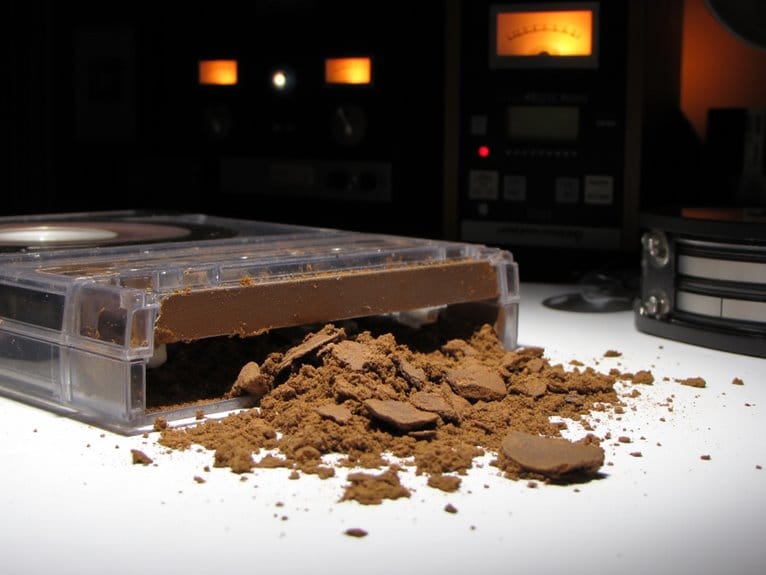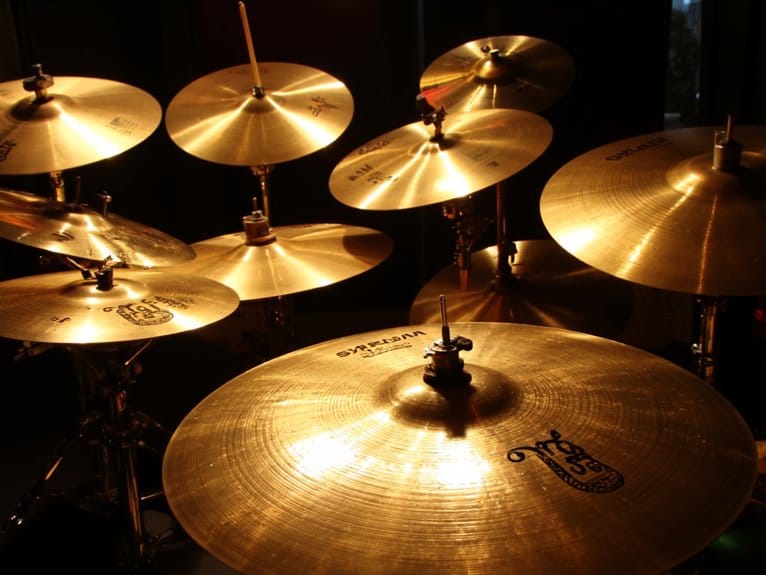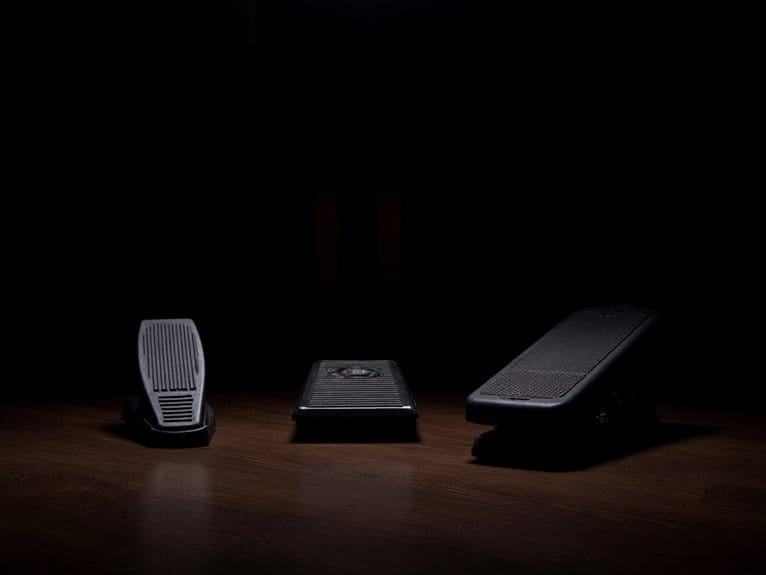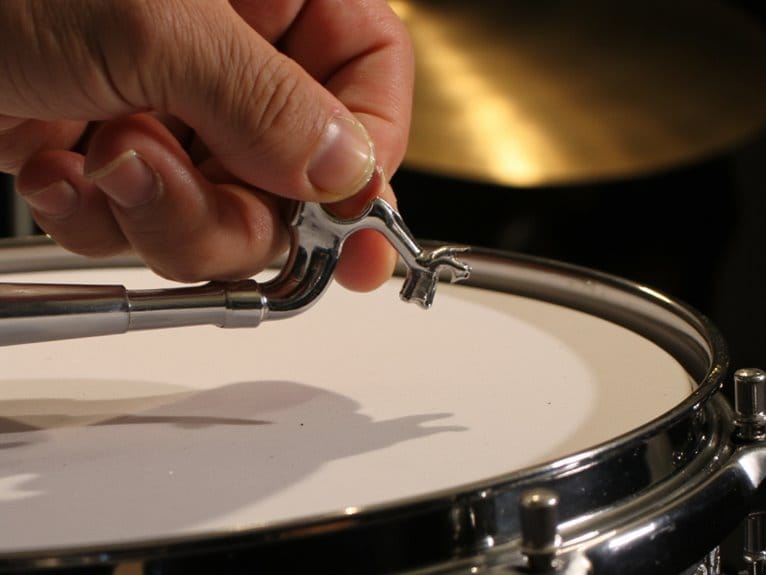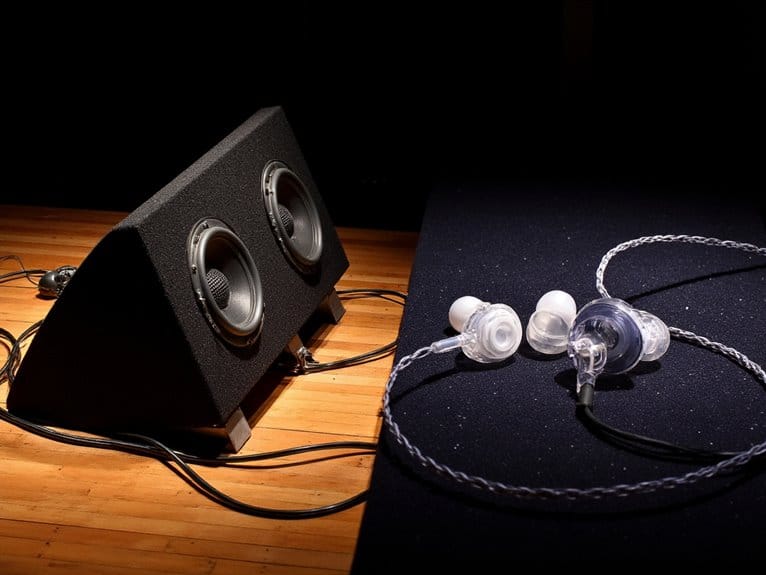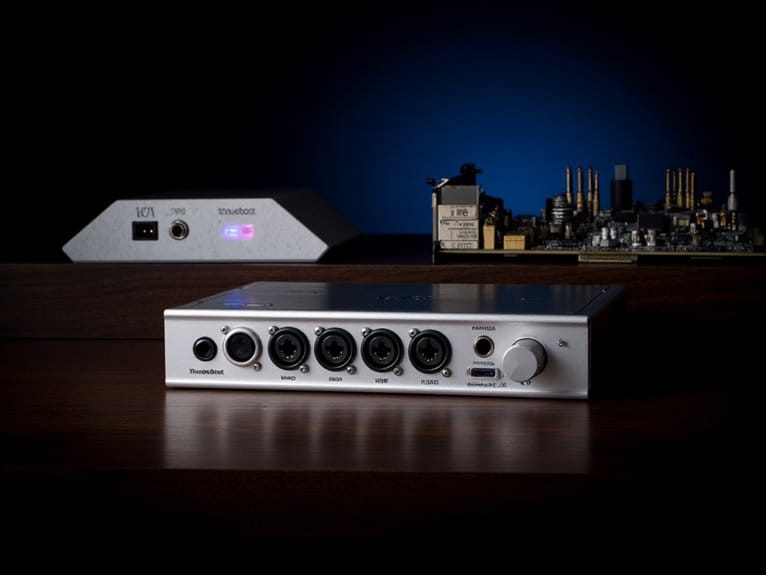Analog Vs Digital Synthesizers: Complete Comparison
When you’re choosing between analog and digital synthesizers, you’ll find that analog models use voltage-controlled oscillators to create warm, harmonically rich sounds through continuous circuits, while digital synths rely on algorithms for precise, versatile audio generation. Analog offers tactile knob control and vintage character but limits polyphony and costs more due to complex components, whereas digital provides extensive polyphony, preset storage, and modern connectivity at lower prices—though exploring each technology’s nuances reveals deeper considerations for your specific needs.
We are supported by our audience. When you purchase through links on our site, we may earn an affiliate commission, at no extra cost for you. Learn more.
Notable Insights
- Analog synthesizers use voltage-controlled oscillators for warm, harmonically rich sounds while digital synths use algorithms for precise, noise-free audio.
- Analog synths feature direct knob/slider control for immediate parameter access, whereas digital models often require menu navigation for complex functions.
- Digital synthesizers offer extensive polyphony (64-128+ voices) and preset storage, while analog synths typically provide limited voices (4-8) requiring manual adjustments.
- Analog synths cost more due to expensive components and complex manufacturing, while digital models use affordable DSP chips reducing production costs.
- Analog synthesis emerged in the 1960s-70s emphasizing character and warmth, while digital synthesis developed in the 1980s prioritizing precision and versatility.
Sound Generation Technology: How Each Type Creates Audio
When you’re diving into the world of synthesizers, understanding how analog and digital models create their distinctive sounds becomes essential for making informed decisions about your musical toolkit.
Analog synthesis advantages stem from continuously fluctuating electrical voltages that flow through voltage-controlled oscillators, generating raw waveforms like sine, sawtooth, and square waves with natural imperfections and circuit-specific warmth. You’ll find these synths use subtractive methods, starting with harmonically rich sounds and filtering frequencies out through voltage-controlled filters and envelope generators. The continuous signal flow through these analog circuits creates the unique tonal quality that many producers prize in their music. These systems incorporate operational amplifier integrated circuits that have been standard since the 1960s for processing and amplifying the electrical signals.
Digital synthesis innovations, however, process sampled or synthesized waveforms using algorithms and microprocessors, enabling both subtractive and additive approaches that precisely combine sine waves at different frequencies, creating complex sounds impossible with analog circuitry alone.
Tonal Character and Audio Quality Differences
The fundamental differences in how analog and digital synthesizers generate sound create distinctly different tonal characters that I’ve found can make or break your musical vision.
Analog synths deliver inherent tonal warmth through continuous voltage circuits, producing harmonic richness with pleasant imperfections and subtle fluctuations that I genuinely love for vintage tones.
Analog circuits create that coveted vintage warmth through continuous voltage flow, delivering rich harmonics with beautiful imperfections that digital can’t replicate.
Digital synthesizers excel in audio clarity and dynamic range, offering superior noise characteristics with virtually no hiss or hum. They utilize digital signal processing algorithms to generate and manipulate sound with mathematical precision.
While analog circuits add harmonic complexity through oscillator drift and natural instabilities, digital platforms provide broader sound palette options with precise, repeatable results.
I’ve noticed that analog’s organic character suits classic genres perfectly, whereas digital’s versatility and noise-free operation better serves modern production demands requiring complex layering.
User Interface Design and Control Methods
When you’re comparing analog and digital synthesizers, the way you interact with each instrument fundamentally shapes your creative workflow, whether you’re adjusting parameters through dedicated hardware controls or maneuvering complex menu systems.
I’ve found that analog synths typically offer immediate, tactile access to every parameter through physical knobs and sliders, while digital models often require you to navigate through multiple menu layers to reach specific functions, though they compensate with far more extensive parameter sets.
Your choice between these control philosophies ultimately determines whether you’ll prioritize instant, hands-on manipulation or thorough programmability with deeper editing capabilities.
Digital synthesizers also incorporate modern connectivity features like MIDI ports and USB interfaces that enable seamless integration with computers, DAWs, and other electronic equipment for enhanced workflow possibilities.
Hands-On Hardware Controls
Control philosophy fundamentally shapes how you’ll interact with your synthesizer, and I’ve found that the difference between analog and digital approaches can make or break your creative workflow.
Analog synthesizers excel at providing immediate tactile feedback through dedicated knobs, sliders, and switches that map directly to specific parameters like filter cutoff, resonance, and envelope settings. You’ll twist a knob and instantly hear the result without any menu diving or digital delays.
Digital synthesizers, while offering deeper sound design possibilities, often compromise this immediacy through shared controls and complex control mapping schemes that require maneuvering through menus or using multifunctional encoders.
The trade-off becomes clear during live performance, where analog’s one-function-per-control design promotes spontaneous creativity.
Modern synthesizers under $500 increasingly feature dedicated hardware controls with abundant knobs and touch-sensitive keys to streamline both live and studio workflows.
Beyond the immediate tactile experience lies another layer that greatly impacts your synthesizer workflow, and I’ve noticed that menu navigation systems reveal perhaps the starkest divide between analog and digital philosophies.
Analog synthesizers embrace minimalism with linear menu trees or no menus at all, keeping you focused on hands-on control. Digital synths, however, require sophisticated menu categorization strategies to organize their vast parameter sets, typically featuring hierarchical structures with nested submenus for oscillators, filters, envelopes, and effects.
Navigation efficiency techniques vary dramatically between formats:
- Color LCD/OLED displays with touchscreen interfaces enable direct parameter interaction
- Encoder wheels with push-button functions streamline menu scrolling and selection
- Directional buttons simulate traditional computing navigation for familiar operation
- External MIDI controllers and software editors provide alternative navigation methods
- Categorized preset browsers with alphabetical sorting accelerate sound selection
Real-Time Parameter Access
While menu navigation reveals philosophical differences, the moment you actually need to adjust parameters during a live performance or recording session exposes the most critical distinction between analog and digital synthesizers.
You’ll find analog synths offer immediate, tactile control through dedicated knobs and sliders, where each physical control maps directly to a specific parameter without layers of complexity.
Digital synths compensate for their menu-driven nature with sophisticated real time modulation systems, including assignable macro controls and motion sequencers that can automate multiple parameters simultaneously.
The trade-off becomes apparent when you’re performing: analog provides instant access but limited options, while digital offers extensive sequencer flexibility through programmable automation and external MIDI integration, though sometimes requiring more preparation time.
Polyphony Capabilities and Preset Storage
When you’re choosing between analog and digital synthesizers, one of the most significant practical differences you’ll encounter involves how many notes each can play simultaneously and whether they can remember your carefully crafted sounds.
Analog polyphony remains severely limited due to the exponential cost and complexity of duplicating entire circuits for each voice, which explains why most analog synths offer only 4-8 voices compared to digital synths’ 64-128+ note capabilities.
Digital presets revolutionize workflow efficiency by storing and instantly recalling complex parameter configurations, while analog synths require manual knob adjustments every time you want that perfect sound back.
- Digital synths excel at complex chords and layered textures without note stealing
- True fully analog polyphony exists in only rare, expensive models like Korg PS3300
- Preset storage requires digital circuitry, making “pure” analog impossible with memory features
- Paraphonic designs simulate polyphony by sharing signal paths between voices
- Hybrid synths blend digital voice management with analog filters for enhanced capabilities
Cost Factors and Build Complexity
The reality behind synthesizer pricing becomes clear once you examine what’s actually inside these instruments, where analog designs demand considerably more expensive components and complex manufacturing processes compared to their digital counterparts.
You’re looking at costly VCOs, VCAs, and precision filters in analog synths, while digital models rely on software algorithms running on standardized DSP chips. Component sourcing for analog instruments involves hand-selected transistors and premium potentiometers that drive costs higher, whereas digital synths benefit from mass-produced processors.
Manufacturing processes differ dramatically too—analog builds require meticulous calibration of intricate signal paths, while digital assembly focuses on simpler PCB designs.
When you need polyphony, analog synths multiply hardware costs exponentially since each voice demands dedicated circuitry.
Maintenance Requirements and Long-Term Reliability
Once you’ve invested in either type of synthesizer, I’ve learned that your maintenance responsibilities and long-term reliability concerns will differ dramatically between analog and digital instruments, each presenting unique challenges that can greatly impact your ownership experience over the years.
For analog synthesizers, you’ll need to develop maintenance best practices around aging electrolytic capacitors, which can bulge or leak, compromising voltage regulation and potentially damaging sensitive circuits.
Meanwhile, digital synths require different reliability assessment strategies, focusing on firmware integrity and internal battery condition rather than component degradation.
- Analog synths suffer from scratchy potentiometers requiring dust covers and regular cleaning
- Digital displays may fade or fail with costly, often unavailable replacement parts
- Vintage analog IC chips become increasingly scarce, complicating repairs considerably
- Digital tactile switches can be replaced with modern sealed components more easily
- Environmental control greatly impacts analog longevity while digital faces firmware corruption risks
Historical Development and Modern Applications
Beyond these practical ownership considerations, I’ve found that understanding how analog and digital synthesizers evolved reveals why each technology developed such distinct characteristics and why they’ve carved out different niches in today’s music landscape.
The synth evolution began with Moog’s 1964 voltage-controlled modules, leading to the groundbreaking Minimoog Model D in 1970. Digital synthesis emerged later with the Synclavier in 1977, though Yamaha’s DX7 truly revolutionized the market in the 1980s.
| Era | Analog Milestones | Digital Breakthroughs |
|---|---|---|
| 1960s-70s | Moog Modular, Minimoog D | Early computer synthesis |
| 1980s | Prophet 5, CS-80 | DX7 FM synthesis |
| 1990s-Present | Vintage revival, Eurorack | Software synthesizers |
Today’s vintage revival demonstrates how both technologies complement each other, with analog providing warmth and digital offering precision.
Frequently Asked Questions
Can I Use Both Analog and Digital Synthesizers Together in Performances?
You can absolutely combine both synthesizer types in performances. Synthesis integration enhances your sonic palette while improving performance dynamics. You’ll gain analog warmth with digital versatility, creating richer textures through MIDI synchronization and hybrid control setups.
Which Type of Synthesizer Is Better for Learning Synthesis Fundamentals?
You’ll learn synthesis techniques faster with analog synthesizers since they offer direct, hands-on control over sound parameters. Their physical interfaces make sound design principles more tangible and intuitive compared to menu-driven digital alternatives.
On a final note
You’ll find that choosing between analog and digital synthesizers ultimately depends on your specific needs, budget constraints, and sonic preferences. If you’re after that warm, organic character with hands-on control and don’t mind higher costs, analog’s your path. Digital offers incredible versatility, polyphony, and affordability, though some purists argue it lacks analog’s soul. Both technologies excel in different contexts, so you can’t really go wrong either way.


